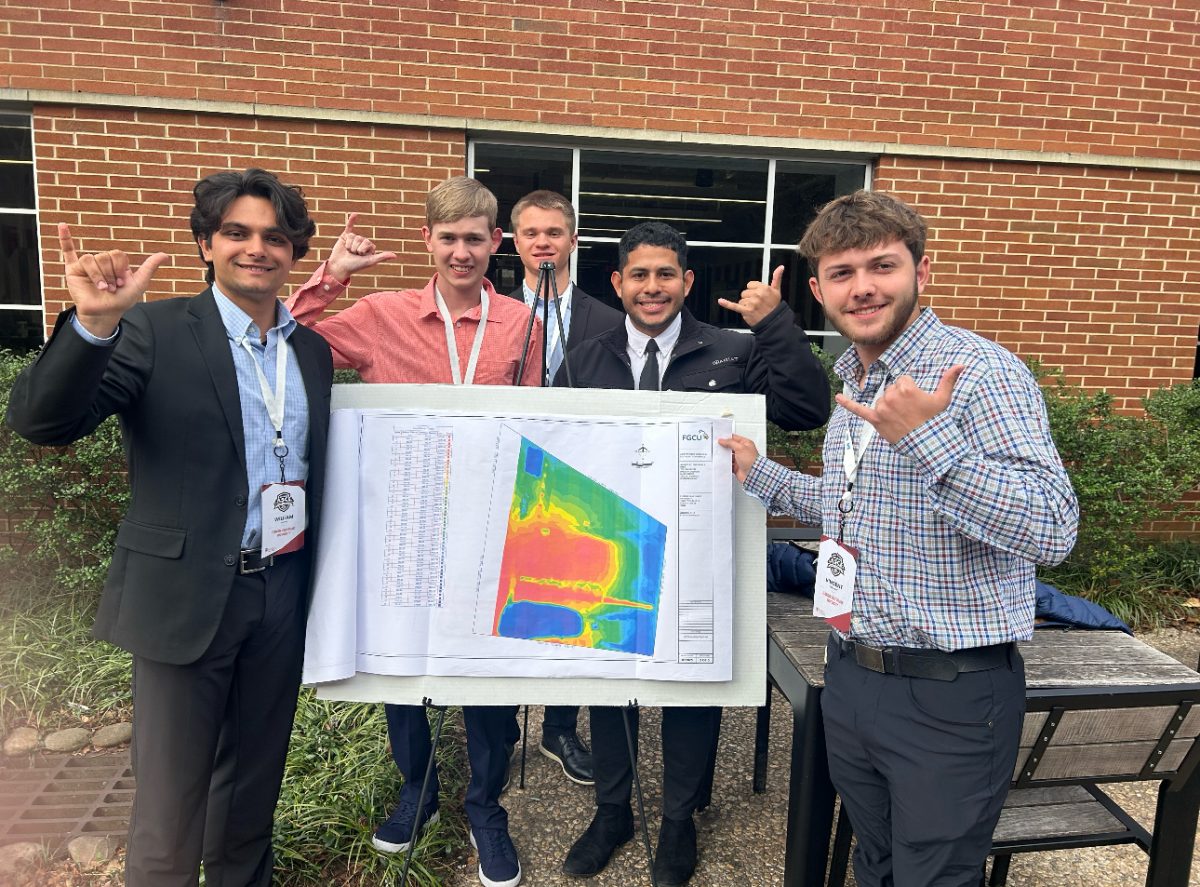
Photo Courtesy of William Kalvin
Civil engineers design, build and maintain infrastructure projects such as roads, bridges, buildings, dams, airports and water supply systems.
FGCU’s student chapter of The American Society of Civil Engineers (ASCE) is one of the largest registered student organizations (RSO) in the engineering program. The student chapter partners with the Southwest Florida branch of ASCE. ASCE is like a worker’s union for civil engineers.
William Kalvin is a sophomore civil engineering student and president of ASCE. Kalvin found out about ASCE at the involvement fair his first year. By the end of Kalvin’s freshman year, he was elected as president.
“The entire executive board was all seniors, so they all graduated and moved on with their careers,” Kalvin said. “They left behind this club, which they had just grown back after COVID.”
ASCE offers student chapters in all 50 states and some international countries. Students are eligible for free student membership and resources to help them begin their careers. Students with membership have access to mentoring, educational resources, networking and symposia, where students compete against each other in a variety of events.
ASCE is open to all students no matter their major. It takes students beyond the textbooks and gives them the firsthand application of what they are learning in the classroom. It holds general body meetings every other Wednesday and a variety of events and workshops.
The most prominent event is the Southeast Student Symposium. Every year ASCE competes against other schools from Florida, Georgia and Puerto Rico. Symposia allows students to highlight their civil engineering skills through a series of events. These events range from building a concrete canoe, constructing a steel bridge, using sustainability in construction, land surveying, 3D printing and a paper competition where students write and present.
Over spring break, ASCE traveled to the University of Georgia to compete in land surveying and the paper competition. Before land can be developed, a civil engineer will measure and map the features of the land area including its boundaries, topography and elevation.
Kalvin said this is crucial to ensure proper placement and avoid legal issues against property lines. Once a civil engineer finds the data of the land, they then use it to map out blueprints pre-construction.
“Imagine a civil engineer like a math student in the wild,” Kalvin said.
Students have been preparing all year for the symposium. Students practice Monday, Wednesday and Friday behind Whitaker Hall. Vincent Ehrhardt, a first-year civil engineering student, serves as the team captain of land surveying. Ehrhardt has worked in construction since he was 15 and was originally a construction management major but switched to civil engineering.
“I realized that I like designing stuff more rather than managing projects,” Ehrhardt said.
In years past, ASCE competed in the concrete competition. Student teams must construct a canoe out of concrete, and it must function, hold the weight of four people, sink and float right back up to the water’s surface. ASCE will not compete in Concrete Canoe this year, but they are preparing the materials and mapping out a plan for next year’s competition.
“The last time we were in Concrete Canoe was March 2020, but we all know what happened,” said Kalvin. “We are practicing what we like to call organizational sustainability, that just means we might not be able to do it this year, but we are doing everything we can to prepare for next year.”
Access and opportunities come at a cost. ASCE relies on materials and equipment donated by engineering professors and community partners.
“Sometimes there is just not enough funding, but we have plans in place actually several plans in place to get funding as soon as June,” Kalvin said.
ASCE’s goal is to provide students with professional opportunities, networking, skills and leadership. Kalvin says he hopes to inspire the next generation of civil engineers.
“To me, it means giving other students the same experience I had,” Kalvin said. “I had an amazing time my freshman year. I felt like I got taken in by the group, and then they kind of fostered my wonder…my whimsy…my drive. And now I just want to find that same drive in other students and bring them up with me.”